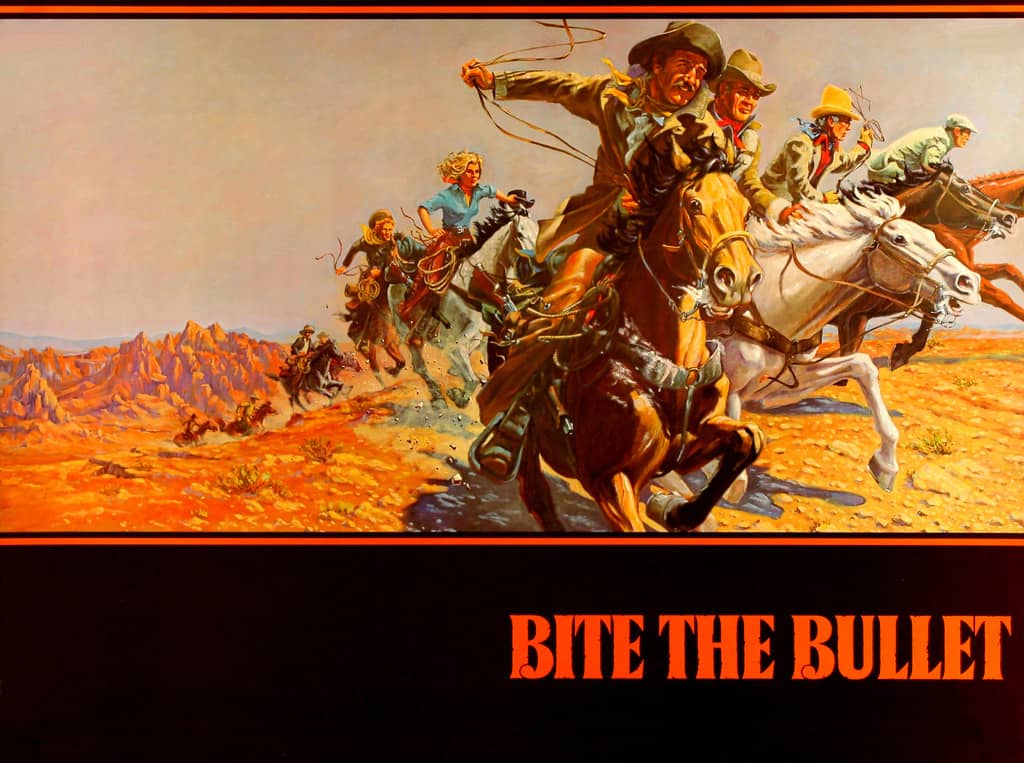Bite the Bullet: Cheer the Villain or Empathize with the Hero?

“Bite the Bullet” (1975), starring Gene Hackman, James Coburn, Ben Johnson and Candice Bergen. Written and directed by Richard Brooks. Filming locations in New Mexico include Carson National Forest, Chama, Taos and White Sands.
Warning: Graphic scenes include what might be, for some, instances of animal cruelty.
Based on an endurance horse race that took place in 1908 and dreamed up the by “Denver Post,” this film is an epic tale that reduces several individuals to their basest selves, set against the changes resultant of the introduction of the railroad, the encroachment of the “civilizing” East and the subsequent shrinking of the West. The real-life race started in Evanston, Wyoming and ended in Denver, Colorado, a distance of about 700 miles. The winner was to receive $2,500. In the fictionalized movie, entrants include a feisty woman, a man from Mexico with a toothache (hence the title), an old man seeking redemption, an Englishman, an upstart and a couple of Rough Riders, to name a few. With so many characters, be prepared to jump from one to another and to experience several story lines with frequent cutaways.
The quick back-and-forth pacing of the film is juxtaposed with numerous slow motion shots meant to heighten emotional impact. Some of the slow-motion scenes involve horses undergoing obvious distress consistent with such a grueling race as well as the outcome of the desperation of those who need the prize money. The back-and-forth format also pivots to show some characters caring for an animal on which they depend to others abusing the animals for personal gain. It is not an old story; nor is the plot line of man versus nature. In this case, New Mexico is the backdrop and its high altitude forests and seemingly endless deserts provide a joint formidable foe; one that tests even the most battle-weary and rugged individualists and forces many to join forces.
New Mexico’s barren and blank landscape is the perfect environment for Richard Brooks whose movies such as “Elmer Gantry,” “The Brothers Karamazov,” “Blackboard Jungle,” “Looking for Mr. Goodbar” and “In Cold Blood” examine the not only crises of society but individuals who are caught in the dilemma of action versus conscience. As in his previous films, the audience is called upon to make the good-guy, bad-guy distinction but also, as in his previous films, it is often easier to curse the villain than to praise the hero.
As such, “Bite the Bullet” is doubly difficult to watch. While Brooks came out and stated that no horses were harmed during the filming, it is not so much the means of the race that is being questioned: it is whether the way one wins should be part of competition and how winners and losers should be viewed during and after the fact.